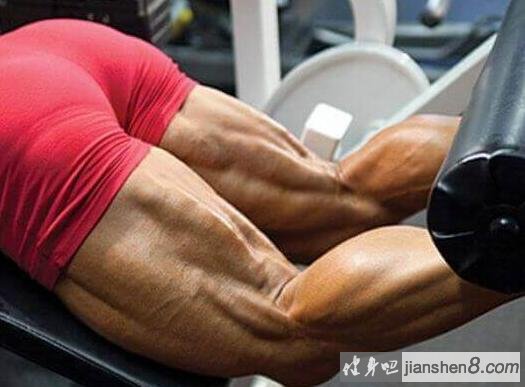
The hamstring muscle group (hamstring)is our body's The most easily overlooked part of the body! Because they are on the back side of the body, there are no pectoral or arm muscles that attract attention!
There are a lot of people in the gym who don’t like to do leg exercises! There are also a large group of people who only train the front of the legs when training their legs! These imaginations illustrate the problem very well!
The back of the leg? Although it is not eye-catching, it does not mean that it can be ignored!

The hamstring muscles are very important!
1 The hamstring muscles are an engine! He is the protagonist in all hip hinge movements (all kinds of deadlifts, glute bridges)! It is a very important "stabilizing" and "power-generating" muscle group
2. Secondly, the quadriceps muscles on the back and front of the leg belong to the "antagonist muscle group" "If the back of your legs is too weak for a long time and the muscle strength is imbalanced, it will inevitably bring the risk of injury!
The hamstrings can both extend the hip and flex the knee, such as doing straight-leg deadlifts and seated leg curls.

In order to fully utilize the hip extension and knee flexion functions of the hamstring muscles, we must practice deadlifts and squats, etc. As well as compound movements, also practice isolation movements such as glute ham raises and leg curls.
Today we are going to talk about how to perform leg curls better

To improve hamstring circumference and strength , one trick is to pay attention to the position of your ankles when doing leg curls.
Very few people pay attention to the calves during kneeling exercises, and in my opinion, this is wrong.
"Where are your toes pointing when doing leg curls?"
Many people don’t pay attention at all.
In knee bending movements, we must consider the function of the lower legs.
The gastrocnemius spans two joints, the ankle and knee. This muscle fiber length prevents it from plantarflexion at the ankle jointplantarflexionActivated during knee flexion (toes away from body). Only in the case of dorsiflexiondorsiflexion of the ankle joint (toes close to the body), calfThis muscle can help the hamstring muscles to flex the knee.

Now, while doing leg curls Try to plantar flex the ankle. You will feel your hamstrings contract more effectively.
Why is foot position so important?
When the ankle joint is plantarflexed, our gastrocnemius muscles are not activated, and we can only rely on the hamstring muscles to provide tension. This phenomenon gives us two interesting options when it comes to hamstring training.
First: When we do leg curls, we can do a set of ankle dorsiflexion, and then do a set of ankle plantar flexion, and so on alternately.
This results in a wave load, with one group weighing more and one group weighing less. The first set of dorsiflexion exercises allows you to use heavier weights and get your gastrocnemius muscles working together! This is a big deal for weak hamstrings.
In the plantar flexion group with a lighter weight, the gastrocnemius is less involved and the muscle fibers of the hamstrings are recruited to the maximum extent

Second option:In leg curls Concentric process (bringing the calf closer to the body), dorsiflexing the ankle joint (involving the gastrocnemius muscle to lift more weight). Use plantar flexion during the eccentric phase (because the muscles are stronger during the eccentric process, we can plantar flex the ankle joint to restore this greater weight and move slower.)
Eccentric overload Maximizes stimulation of fast twitch muscle fibers, thus greatly promoting hamstring development.
< strong>Related recommendations
The back of the thighs that must be practiced: the importance of the hamstrings
Improve your weak hamstring muscles——Glute Ham Raise
Two excellent movements for training the hamstring muscles!